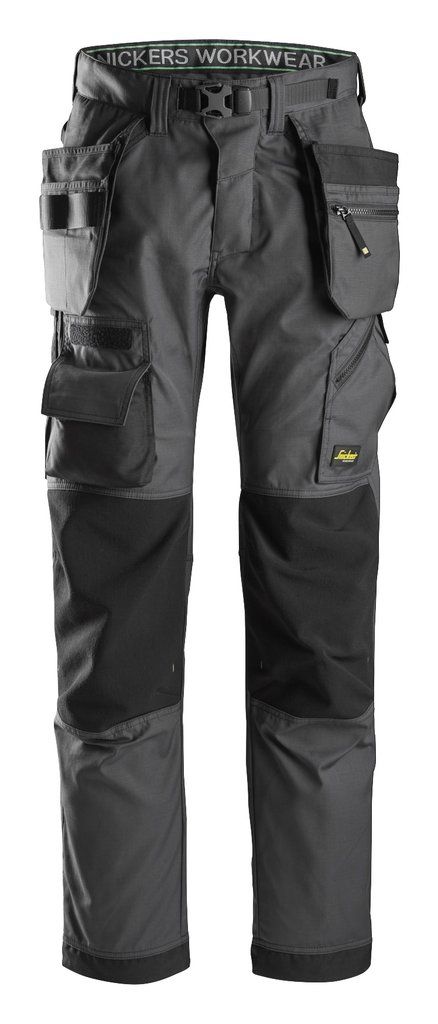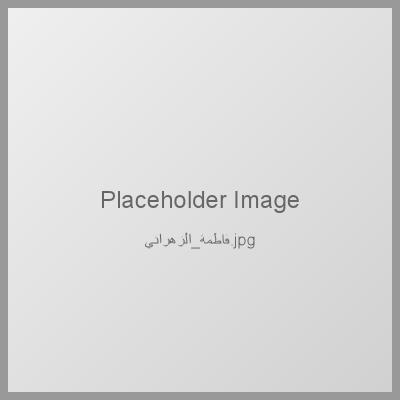
The Importance of Fit and Comfort in Industrial Uniforms for KSA Workforce Productivity
In Saudi Arabia's rapidly expanding industrial landscape, where Vision 2030 continues driving unprecedented growth across construction, manufacturing, logistics, and energy sectors, the relationship between workforce performance and uniform design represents an increasingly critical yet frequently overlooked operational factor. While safety specifications and technical standards receive rigorous attention, the fundamental elements of uniform fit and comfort often remain secondary considerations—creating a significant disconnect between theoretical protection and practical on-the-job effectiveness.
The impact of poorly fitting or uncomfortable industrial uniforms extends far beyond worker dissatisfaction, creating measurable consequences for productivity, safety compliance, talent retention, and operational efficiency. For Saudi organizations navigating ambitious production targets, increasingly complex technical operations, and challenging environmental conditions, addressing these human factors in uniform design represents a strategic opportunity to enhance workforce performance while simultaneously improving safety outcomes and employee experience.
This comprehensive analysis examines the critical relationship between industrial uniform comfort and workforce productivity in Saudi Arabian contexts. By exploring ergonomic design principles, climate adaptation strategies, implementation approaches, and measurement technologies, we provide industrial leaders with actionable insights for developing uniform programs that maximize human performance across the Kingdom's diverse and demanding industrial environments.

Advanced industrial workwear engineered for optimal ergonomics and comfort while maintaining protection in Saudi Arabia's challenging industrial conditions
Productivity Impact of Comfortable Workwear
Quantifiable relationships between uniform design and workforce performance in industrial contexts.
Movement Efficiency and Energy Conservation
How garment design directly impacts physical task performance:
- Range of motion optimization – Properly designed articulation points reducing energy expenditure during repetitive industrial movements
- Force application efficiency – Anatomically aligned garments enhancing power transfer during physically demanding tasks
- Fatigue reduction effects – Properly fitted workwear minimizing energy waste from compensatory movements and posture adjustments
- Task precision enhancement – Improved manual dexterity and controlled movement enabling higher quality outputs
These movement factors create measurable differences in worker output over extended shifts—particularly significant for Saudi industrial operations where intensive physical work often occurs in challenging environmental conditions that already increase energy expenditure.
Cognitive Function and Focus Impact
How physical discomfort affects mental performance:
- Attention allocation effects – Cognitive resources diverted from tasks to manage physical discomfort from poorly fitting uniforms
- Decision quality impact – Degraded judgment and risk assessment resulting from distraction and irritation
- Stress-induced performance decline – Physiological effects of continuous discomfort activating stress responses affecting cognitive function
- Error rate correlation – Documented relationship between physical comfort and mistake frequency in precision industrial tasks
These cognitive impacts are particularly significant for Saudi industrial operations involving complex technical procedures, hazardous materials, or precision manufacturing—where mental focus directly affects both quality outcomes and safety performance.
Compliance and Protective Function
How comfort affects proper use of safety equipment:
- Modification behavior reduction – Comfortable uniforms reducing worker tendency to alter garments in ways that compromise protection
- Consistent wear patterns – Improved compliance with proper uniform use when garments don't create discomfort or interference
- PPE integration effectiveness – Enhanced compatibility with additional protective equipment when base uniforms fit properly
- Safety device compatibility – Proper interface with harnesses, respiratory equipment, and other critical safety systems
These compliance factors transform theoretical protection into actual operational safety—a critical consideration for Saudi industrial organizations where safety performance increasingly influences regulatory standing, insurance costs, and contract eligibility.
Anatomical Design Considerations for Industrial Activities
Engineering approaches to garment construction that enhance comfort and performance in industrial contexts.
Movement Pattern Accommodation
Design elements enhancing functional mobility in work activities:
- Task-specific articulation – Engineered flex points aligned with common industrial movements in Saudi operations
- Dynamic fit systems – Advanced construction allowing garment shape adaptation during changing postures and activities
- Mechanical stress distribution – Strategic reinforcement preventing binding or restriction during force application
- Extended reach accommodation – Design elements preventing garment displacement during overhead work common in construction and maintenance
These movement accommodations ensure uniforms enhance rather than restrict natural body mechanics—supporting rather than fighting worker motion through proper ergonomic design aligned with industrial task requirements.
Pressure Point Elimination
Strategic design addressing sources of discomfort and irritation:
- Seam placement optimization – Strategic positioning avoiding contact with high-pressure body zones during industrial tasks
- Hardware interference prevention – Careful placement of fasteners, pockets and attachments to prevent pressure during equipment use
- Layer interface management – Coordinated design preventing bunching or binding between multiple garment components
- Harness compatibility zones – Special accommodation for fall protection and tool carrying systems common in Saudi construction
These pressure management approaches prevent the common discomfort issues arising from prolonged industrial wear—eliminating the progressive irritation that both distracts workers and often leads to dangerous uniform modifications.
Anthropometric Variation Management
Strategies addressing diverse body shapes in Saudi industrial workforces:
- Multinational sizing adaptation – Comprehensive systems accommodating Saudi Arabia's diverse industrial workforce demographics
- Proportion variation accommodation – Design approaches addressing different body-type distribution ratios common across populations
- Extended size availability – Inclusive sizing ranges ensuring all workers receive properly fitted protection
- Dimensional grading sophistication – Advanced scaling methodologies maintaining proper proportions across size ranges
These anthropometric approaches acknowledge the diversity within Saudi industrial workforces—ensuring properly fitted uniforms for personnel from varied backgrounds while maintaining consistent protection and professional appearance.
Climate Adaptation Strategies for Saudi Environments
Specialized approaches addressing the Kingdom's challenging climate conditions.
Heat Management Architectures
Design systems addressing extreme temperature challenges:
- Microclimate creation systems – Strategic ventilation architectures promoting air exchange between body and environment
- Heat load reduction approaches – Design elements minimizing solar radiation absorption while maintaining protective compliance
- Targeted ventilation structures – Engineered openings and channels increasing airflow at critical heat-generating body regions
- Anti-contact spacer systems – Construction techniques creating air gaps between protective layers and skin surface
These heat management systems directly address one of the most significant comfort challenges in Saudi industrial environments—helping workers maintain effective performance despite ambient temperatures frequently exceeding 45°C in summer months.
Moisture and Perspiration Control
Approaches managing the sweat response to high temperatures:
- Advanced wicking technologies – Specialized material processes moving moisture away from skin to outer garment surfaces
- Evaporative cooling enhancement – Design elements promoting natural cooling effect of perspiration evaporation
- Skin contact area optimization – Strategic reduction of fabric surface directly contacting skin in high-sweat regions
- Anti-microbial integration – Comfort preservation through odor control in high-temperature industrial environments
These moisture management approaches enhance comfort during extended industrial shifts—preventing the discomfort and distraction of sweat accumulation that commonly affects workers in Saudi Arabia's high-temperature operations.
Seasonal Transition Accommodation
Systems addressing variable climate conditions:
- Layering system coordination – Integrated garment families allowing strategic adjustment across seasonal conditions
- Adaptable component architecture – Modular uniform elements enabling configuration changes as temperatures fluctuate
- Day-night transition features – Accommodation for significant temperature variations between daytime and nighttime operations
- Indoor-outdoor adaptation – Features supporting movement between climate-controlled and external environments
These transition approaches ensure consistent comfort across Saudi Arabia's variable conditions—preventing the common situation where uniforms appropriate for one condition become problematic as workers move between environments or as seasons change.
Implementation Approaches for Saudi Organizations
Practical strategies for optimizing comfort and fit across industrial uniform programs.
Task-Based Assessment Frameworks
Systematic evaluation driving appropriate comfort optimization:
- Movement pattern analysis – Structured evaluation of physical tasks to identify critical mobility requirements
- Force application mapping – Assessment of high-exertion activities requiring specific garment accommodations
- Precision task identification – Recognition of operations requiring enhanced dexterity and fine motor control
- Posture variation documentation – Evaluation of positional changes requiring garment adaptation throughout shifts
These assessment frameworks ensure comfort interventions address actual operational needs—creating targeted solutions for Saudi industrial activities based on objective evaluation of physical task requirements.
Worker Engagement Programs
Structured approaches incorporating user experience:
- Trial participant selection – Representative sampling across body types, job functions, and work environments
- Structured feedback collection – Consistent methodologies gathering quantitative and qualitative comfort assessment
- Comparative evaluation systems – Side-by-side testing protocols isolating specific comfort and fit variables
- Long-term performance tracking – Extended evaluation identifying comfort issues emerging after extended wear periods
These engagement approaches ensure comfort solutions address user experience rather than theoretical specifications—incorporating the practical knowledge of Saudi workers performing actual industrial tasks in real operating conditions.
Procurement Standard Development
Organizational approaches standardizing comfort requirements:
- Comfort specification inclusion – Formal incorporation of ergonomic and wearability requirements in purchasing documents
- Verification methodology standardization – Consistent approaches evaluating comfort claims against objective criteria
- Supplier capability assessment – Evaluation of provider design expertise and anatomical engineering capabilities
- Cost-benefit analysis frameworks – Structured approaches justifying comfort investment through productivity and compliance benefits
These procurement approaches prevent the common situation where comfort considerations become secondary to price or appearance factors—creating organizational commitment to worker experience as a fundamental uniform requirement for Saudi operations.
Advanced Measurement and Fitting Technologies
Innovative approaches ensuring optimal garment fit for individual workers.
Digital Measurement Systems
Technologies enhancing sizing accuracy:
- 3D body scanning implementation – Advanced measurement capturing precise dimensional data for personalized uniform creation
- Mobile measurement platforms – Accessible technologies enabling accurate sizing across distributed Saudi industrial operations
- Cloud-based measurement databases – Centralized systems maintaining worker sizing information for consistent uniform ordering
- Dynamic measurement capabilities – Advanced systems capturing body dimensions during movement rather than static poses
These digital approaches significantly improve sizing accuracy compared to traditional methods—ensuring Saudi industrial workers receive correctly fitted uniforms that enhance both comfort and protection across diverse body types.
Customization Technologies
Solutions providing individual fit adaptation:
- On-demand manufacturing capabilities – Rapid production systems creating customized uniforms based on individual measurements
- Modular component systems – Mix-and-match approaches addressing varied body proportions across limb and torso dimensions
- Targeted adjustment features – Specific garment elements allowing personalized fit at critical comfort and mobility points
- Algorithmic pattern generation – Digital systems modifying standard patterns to accommodate individual body variations
These customization capabilities address the reality that standard sizing often fails to fit real workers properly—providing Saudi organizations with practical approaches to enhance individual fit without excessive cost or complexity.
Predictive Comfort Analysis
Advanced technologies anticipating fit issues:
- Virtual wear simulation – Digital modeling predicting garment behavior during specific industrial movements
- Pressure mapping analysis – Advanced visualization identifying potential discomfort points before actual wear
- Range-of-motion prediction – Simulation technologies forecasting movement limitations from specific garment constructions
- Thermal comfort modeling – Predictive systems estimating heat and moisture management performance in Saudi conditions
These predictive technologies enable proactive comfort optimization—allowing Saudi organizations to identify and address potential issues during design rather than discovering problems after deployment in operational environments.
Conclusion: Comfort as a Strategic Performance Factor
For Saudi Arabia's expanding industrial sector, the comfort and fit of workforce uniforms represents far more than a convenience consideration—these factors function as fundamental performance variables with direct impact on productivity, safety compliance, talent retention, and operational excellence. As the Kingdom continues its ambitious industrial expansion under Vision 2030, organizations that strategically address these human factors position themselves for significant competitive advantages through enhanced workforce capabilities.
The most effective approaches recognize that comfort optimization requires systematic attention across multiple dimensions: anatomical design aligned with task requirements, climate adaptation addressing Saudi Arabia's extreme conditions, anthropometric accommodation for diverse workforces, and implementation systems ensuring theoretical comfort translates to actual field experience. This comprehensive perspective transforms comfort from a subjective preference to a measurable performance factor with definable return on investment.
For Saudi industrial leaders navigating increasingly competitive environments, enhancing uniform comfort and fit represents a strategic opportunity to simultaneously improve multiple operational metrics while demonstrating commitment to workforce wellbeing. By leveraging advanced ergonomic design, innovative measurement technologies, and systematic implementation approaches, forward-thinking organizations create uniform programs that maximize human performance—unleashing the full capabilities of the Kingdom's industrial workforce as a driving force in economic transformation and diversification.
